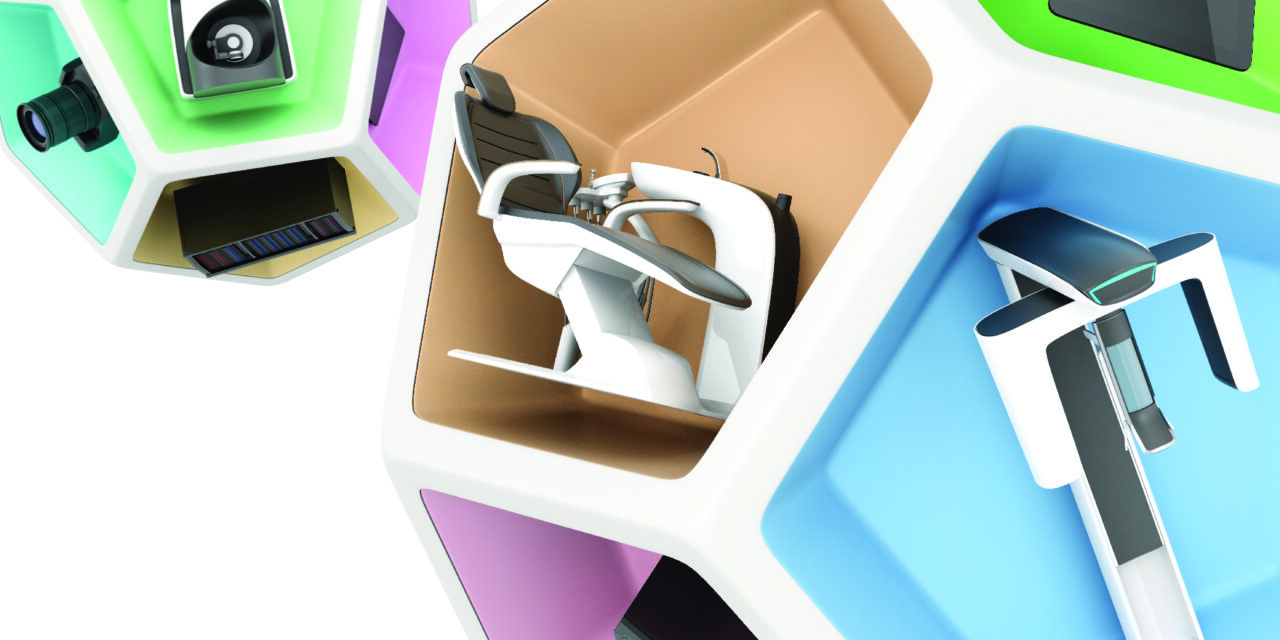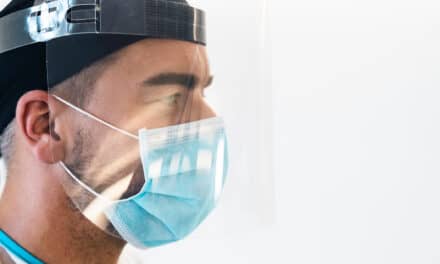While purchasing refurbished or used equipment isn’t as straightforward as buying new, done with this guidance in mind, it can be a great way to save money.
By Jane Kollmer
It is easy to take for granted the variety of equipment orthodontists use to treat patients daily, from the delivery units to sterilizers and autoclaves. Each piece of equipment plays an important role in the success of the clinical practice, but acquiring that equipment is often a big up-front expenditure with some of the pricier items, such as imaging systems, costing close to $100,000.
The good news is that the technology curve is not as steep as it was 15 years ago, so the differences between generations of a product may be only slight. As a result, it is not always necessary to shell out full price for a brand-new piece of equipment and upgrade as frequently.
That’s why some orthodontic practices turn to used or refurbished equipment as a way to save money. These practices range from those just starting out, those looking to upgrade their existing equipment, or those whose practice has expanded to multiple locations.
This purchasing strategy is not as straightforward as buying new, but for increasingly more orthodontists, the cost savings are hard to pass up. On average, used equipment can save between 30% and 50% of the full cost.
“It’s just a smart business decision,” says Lyle Miller, MBA, cofounder of Renew Digital in Atlanta. “If I can save $30,000 on an x-ray [system] that my patients aren’t going to know is pre-owned or new, why wouldn’t I do that?”
Potential cost-savings aside, buying a product that is previously owned may present risks and does require some degree of research. Following are considerations to help an orthodontic practice make an informed decision so it doesn’t get stuck with less-than-optimal equipment.
Know what you’re getting
Although there is no standardized definition, refurbished equipment is typically resold by manufacturers after it has been taken apart, cleaned or repaired, reassembled, and tested for working condition. Used varies between anything from a piece of demo or loaner equipment to one that has been gently or heavily used by a previous owner that is retiring or closing their practice or simply wants newer equipment. It is therefore important to understand exactly what you are getting and what condition it’s in.
“When a dentist’s office asks us about purchasing refurbished or used equipment, we caution them about the potential downside,” says Mike Etheridge, director of North American marketing at SciCan, which sells instrument processing solutions for dentists. “New equipment should always be purchased from an authorized distributor to be installed properly and activate the product warranty.”
He adds that if you’re interested in purchasing refurbished or used equipment, at least talk to your dealer service technician about moving and installation as they are the experts in this area. If you know the serial number before the purchase, a manufacturer or dealer can at least give you some service history on the machine to help you with your decision.
“You can potentially save money up front, but if the service fees and downtime cost you more over the next 5 years than buying new, then it’s not a good investment,” he says.
Find a reputable dealer
The benefits of purchasing from a company that specializes in that particular equipment are that their reputation is easy to learn about and they can easily coordinate the delivery and installation of the equipment.
The riskiest way to buy equipment is through online e-commerce sites such as Craigslist and eBay because there is really no way to verify the reputation of the seller or the condition of the product. Buying from another orthodontist directly also presents major complications, such as transporting the equipment safely and installing it properly. There are plenty of horror stories involving purchases gone wrong where the equipment was damaged during shipping.
“If you were buying a high-quality used Rolls Royce, you wouldn’t buy from a place that doesn’t look too reputable and you don’t know anything about the car or its history,” says Robert F. Good II, DMD, MDS, of Good Orthodontics.
Ronald S.Good, DMD, MS, his brother and partner at the practice, adds, “But if you know somebody that has a Rolls Royce that was taken care of, you could buy it used at a much more reasonable price and still have the Rolls Royce.”
Plan for future growth
A good rule of thumb in general for buying equipment is to anticipate needs several years into the future. Etheridge asks his customers about not just what’s happening at their practice now, but what may happen 2 or 3 years down the road. Practices that plan to expand, or open new locations, for example, will need to purchase more equipment over time.
In fact, it’s very common for practices to want additional equipment because if one system goes down, they have a working back-up and won’t have to interrupt their clinical practice.
When it comes to the actual purchasing decision, orthodontists should think about whether or not they want to buy a certain brand of product that they already trust.
When it comes to sterilization equipment, Etheridge says practices “may want to standardize on a line of equipment so that they can train staff and are able to have their sterilization staff work easily between multiple offices without having to learn several systems.”
If they are open to different brands, they can use a reseller like Renew Digital that carries an inventory of products from different manufacturers.
“We work with what we consider to be the leading five or six manufacturers across the [imaging] industry, so we’re not tied to any one brand,” Miller says. “We’ve got access to different makes and models, which allows us to be very independent in terms of talking through an individual situation and understanding that what the best fit might be for one person is not necessarily the best fit for the next person.”
It is then very practical to have a conversation about your needs instead of what you can afford—especially when it comes to sterilization equipment. Reuben Druckenmiller, a biomedical technician and general manager at Sierra Biomed based in Hanover, Md, warns that shopping based on price point alone spells trouble. Instead, he recommends first checking with your instrument IFUs (instructions for use) to see what type of sterilization cycle is validated for use with that particular instrument, and then buying an autoclave that will allow you to run that cycle. Not all autoclaves are created equal, especially when it comes to prevacuum vs gravity units.
“Can you actually sterilize and be 100% sure that you’re actually sterilizing these instruments with the autoclave that you’re about to buy?” he says.
Ask about the warranty, service, and support
Another important benefit of buying from a reputable place is that you can usually get a warranty to protect your purchase in the event it breaks down. Although it is unlikely to be as long as one you would get on a new piece of equipment, you still may be able to buy an extended warranty.
“These are some of the things that doctors have to be cautious about, because you do want to have some ownership there from the manufacturer standpoint with warranty; you want to know that if you buy something new, the manufacturer and distributor service team will there for you,” Etheridge says. “And if you buy something refurbished or used, you might not get that.”
Benjamin Larrabee, DDS, MS, orthodontist and owner of Mesa, Ariz-based Advanced Orthodontics says buying used felt like going to a store and buying an item that’s box was opened.
He says, “I was a little more open to buying used equipment because it was just barely used, and because I got a significant discount and was able to put a nice warranty on it.”
Larrabee also mentions that dependability was a major factor in his decision to buy a certified pre-owned x-ray system from Renew Digital.
“What you want is to make sure that if something does go wrong, they fix it and make it right,” he says. “I haven’t had any issues on my end at all, but I still keep the warranty under it.”
Good Orthodontics also purchased used imaging systems under warranty from Renew Digital and reports being happy with the continued support. Buying used allowed them to purchase state-of-the-art, 3D x-ray units for their three locations in the Pittsburgh, Pa region without paying full price.
“We strive to service our patients at the highest end of excellence, so to be able to make that happen, going with something brand new for three offices just wouldn’t be economically feasible,” said Ronald Good. “When we look at how often we use that equipment, it has been a game-changer for us in our profession.”
He says the big advantage is that they got the equipment with more favorable pricing, but he recognizes the value of dependable service and reputable quality units.
“Because we purchased quote-unquote used equipment, I don’t feel any lesser about that at all,” he says.
Etheridge notes that whether buying used or new, it all comes down to making a smart business decision, and there are a lot of factors, including price, involved in the decision. OP
Jane Kollmer is a freelance writer for Orthodontic Products.










